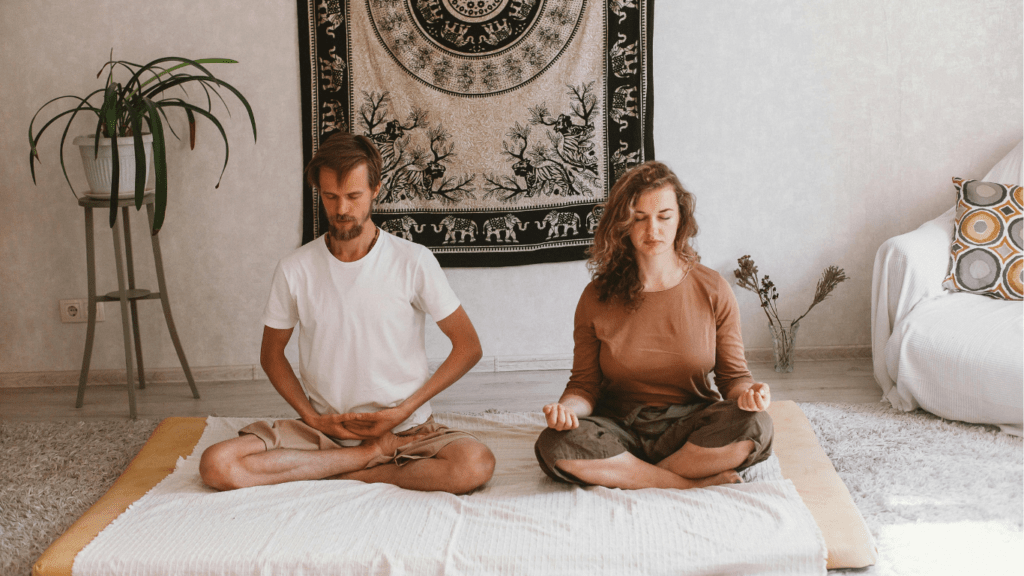Staying focused feels harder than ever with endless distractions competing for our attention. As we step into 2025, the need for practical ways to sharpen our minds and stay present has never been greater. That’s where mindfulness comes in—a timeless practice evolving with modern techniques to meet today’s challenges.
Understanding Mindfulness And Its Importance
Mindfulness involves maintaining awareness of the present moment while calmly acknowledging thoughts, emotions, and physical sensations. This practice promotes clarity and helps reduce mental clutter. By focusing on the now, individuals enhance their ability to manage distractions and maintain attention on tasks.
Incorporating mindfulness into daily life strengthens cognitive functions and emotional regulation. Studies from the American Psychological Association highlight its role in reducing stress and improving memory retention. For professionals, students, or anyone navigating a high-demand environment, mindfulness fosters sustained focus and enhanced productivity.
Its importance lies in its versatility. Whether through:
- meditation
- breathing exercises
- mindful walking
it adapts to diverse lifestyles. This adaptability makes mindfulness a practical tool for addressing the specific challenges of modern living, particularly as the pace of life accelerates.
The Benefits Of Practicing Mindfulness For Focus
Mindfulness directly improves focus by training the brain to stay present. When I consciously bring my attention to the current moment, it minimizes mental wandering, allowing greater concentration on tasks. Studies from NIH confirm that mindfulness practices enhance attention span by reducing engagement with distracting thoughts.
Practicing mindfulness enhances cognitive flexibility. By observing thoughts without reacting impulsively, I build the mental adaptability to shift focus back to priorities when distractions occur. Research in cognitive neuroscience shows that such awareness strengthens the prefrontal cortex, which is critical for sustained attention.
Stress reduction is a significant benefit. High stress disrupts focus and productivity, but mindfulness lowers cortisol levels, improving overall mental clarity. Regular mindfulness practices like focused breathing or meditation help me manage stress effectively, creating an optimal environment for focus.
Mindfulness fosters emotional regulation, which supports clear thinking. When I acknowledge emotions without judgment, it reduces anxiety and prevents overthinking, both of which hinder focused attention. This regulation aids in maintaining calm and steady mental states during demanding tasks.
Engaging consistently with mindfulness techniques boosts memory retention. Studies indicate that mindfulness optimizes working memory by reducing cognitive overload. By managing my mental clutter, mindfulness helps me process and recall information more effectively, which directly supports long-term focus improvement.
Top Mindfulness Practices To Boost Focus In 2025

Mindfulness practices offer practical solutions for boosting focus in an increasingly distracted world. By integrating effective methods into daily routines, individuals can enhance their cognitive abilities and maintain attention on essential tasks.
Meditation Techniques For A Clearer Mind
Meditation strengthens the brain’s ability to focus on the present. I recommend starting with mindfulness meditation, where you allocate 10–15 minutes to sit quietly and focus on your breath or a specific thought. Guided meditations, available on platforms like Insight Timer or Calm, help refine technique and ensure consistency. Research from the American Psychological Association reveals that consistent meditation improves attention span and reduces mental fatigue.
Breathing Exercises To Cultivate Attention
Controlled breathing activates the parasympathetic nervous system and enhances alertness. The 4-7-8 technique—a sequence of inhaling for 4 seconds, holding for 7 seconds, and exhaling for 8 seconds—reduces stress levels. Box breathing, practiced by inhaling, holding, exhaling, and pausing for equal counts of 4, sharpens focus. I find that pairing breathing exercises with short task breaks maximizes attention during work hours.
Mindful Movement Practices
Incorporating movement into mindfulness benefits focus and physical health. Practices like yoga and tai chi combine deliberate movements with focused breathing, promoting awareness. Activities such as mindful walking require attention to each step, sound, or sensation, grounding the mind in the present. I suggest scheduling at least 30 minutes of mindful movement daily to recharge mentally while staying active.
Digital Tools And Apps For Mindfulness
Technology offers accessible ways to enhance mindfulness. Apps like Headspace and Breethe provide structured programs for meditation and breathing exercises. Tools like Brain.fm use cognitive-focused music to improve concentration. When I’m working, I use apps like Forest to minimize digital distractions by gamifying productivity. These tools simplify mindfulness integration, making it easier to form lasting habits.
How To Build A Sustainable Mindfulness Routine
Establishing a sustainable mindfulness routine requires intentional planning and consistency. Integrating mindfulness into existing habits increases the likelihood of long-term success. By anchoring mindfulness to daily activities, I create a routine that’s easier to maintain over time.
1. Set Clear Goals
Defining specific mindfulness objectives ensures clarity and motivation. For example, I aim to dedicate 10 minutes daily to meditation or practice mindful breathing before high-pressure tasks. Clear, measurable goals keep routines purposeful.
2. Choose Practical Practices
Selecting mindfulness techniques that align with my lifestyle makes the integration seamless. Techniques such as deep breathing after waking up, mindful walking during lunch breaks, or short meditation exercises before bedtime are easy to incorporate.
3. Create a Dedicated Space
Establishing a quiet area for mindfulness practices reduces distractions. I ensure the space is comfortable, clutter-free, and calming. A consistent environment reinforces the habit psychologically.
4. Schedule Regular Times
Setting a consistent time for mindfulness solidifies the routine. Whether it’s during a morning ritual, mid-afternoon break, or evening wind-down, I choose times that align with my daily schedule. Repetition at the same time builds habit strength.
5. Utilize Supportive Tools
Leveraging apps like Calm or Insight Timer provides guided sessions and habit trackers. I also use wearable devices to monitor mindfulness metrics, ensuring measurable progress. These tools make mindfulness easier to sustain.
6. Reflect and Adapt
Regularly evaluating my mindfulness routine helps me adjust to changing needs. If my schedule shifts, I modify my practices to ensure consistency without overcommitting. Adaptable routines remain resilient under varying circumstances.
Building and maintaining this routine enhances my ability to practice mindfulness consistently, ensuring lasting focus improvements in demanding environments.
Tips For Staying Consistent In 2025
1. Anchor mindfulness to existing habits
I integrate mindfulness into activities I already do, like a morning coffee or an evening walk. Associating mindfulness practices with daily routines ensures they become automatic over time.
2. Set realistic goals
I start with achievable targets, such as practicing mindfulness for five minutes daily. Gradually increasing the duration prevents burnout and maintains consistency.
3. Choose practices that suit your lifestyle
I select mindfulness techniques that align with my schedule, like guided meditations or short breathing exercises, ensuring maximum compatibility and usability.
4. Create a dedicated space
I designate a quiet, comfortable area for mindfulness. A consistent spot reduces distractions and builds a mental association with practice.
5. Schedule regular sessions
I block specific times for mindfulness in my calendar, treating them as non-negotiable appointments. Structured routines reinforce the habit and ensure regular engagement.
6. Leverage apps and tools
I rely on digital tools like Calm or Headspace for guided sessions. Notifications from these apps help me stay accountable and track my progress.
7. Reflect and adapt regularly
I periodically review my mindfulness routine, adjusting techniques if necessary to match evolving needs or preferences. This flexibility keeps the practice relevant and sustainable.





